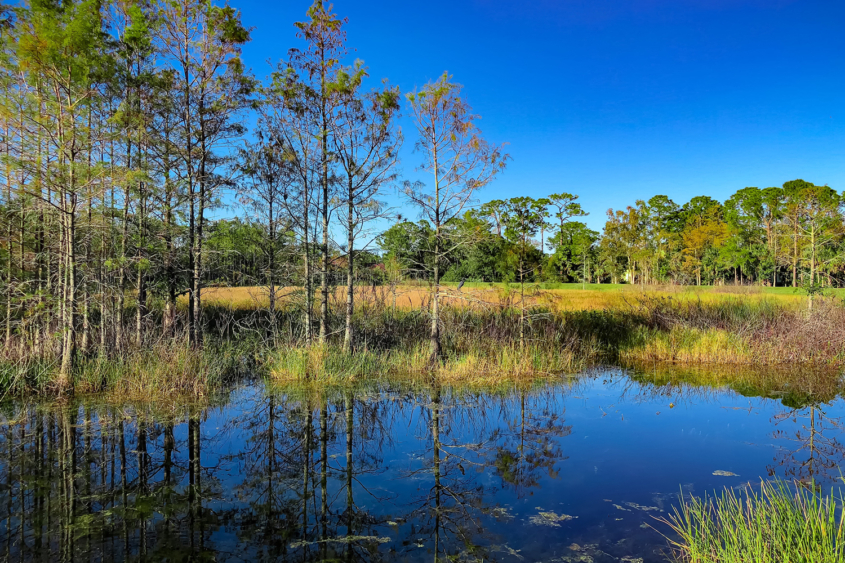
EPA Used Dubious Methodology to Justify Weakening the Clean Water Act Agency wrongly assumed that states will step in to protect waterways when over half of U.S. wetlands and 35% of streams in the West lose federal protection, researchers say
The Trump administration’s decision to remove federal Clean Water Act protections from millions of acres of wetlands and millions of miles of streams is based on dubious methodology and flawed logic, according to a new report by environmental economists from leading research institutions across the United States.
“The EPA’s decision to make major changes to the rules protecting the nation’s waterways relies on economic analysis that may underestimate the benefits of streams and wetlands, especially as they affect waters downstream,” said David Keiser of the University of Massachusetts, Amherst, a co-author of the report. “The EPA also failed to adhere to its own guidelines. The new rule includes many contradictions that are inconsistent with the best available science.”
The study is titled “Report on the Repeal of the Clean Water Rule and Its Replacement With the Navigable Waters Protection Rule to Define Waters of the United States.” It was prepared by the External Environmental Economics Advisory Committee, which is partially funded by the Luskin Center for Innovation at UCLA and co-chaired by JR DeShazo, a professor of public policy, urban planning, and civil and environmental engineering at UCLA.
Last January, the Environmental Protection Agency and the Army Corps of Engineers removed the Obama-era Clean Water Rule, which clarified which bodies of water fell under federal protection from pollution under the 1972 Clean Water Act. Earlier this year, the agencies replaced that rule with the Navigable Waters Protection Rule, which removes isolated wetlands, and ephemeral and intermittent streams from federal pollution protection.
The rule change makes it much easier for developers, agricultural operations, oil and gas companies, and mining companies to dredge, fill, divert, and dump pollution into ephemeral streams and isolated wetlands. Ripple effects could include worsening water pollution; loss of habitat for birds, fish and other species; diminished recreational waterways; more frequent algal blooms; and increased flood damage to communities as wetlands disappear, according to the report.
A 2017 staff analysis by the EPA and the Army Corps found that the new rule would leave over half of U.S. wetlands and 18% of U.S. streams unprotected, including 35% of streams in the arid West.
While developing the rule, the EPA and the Army Corps of Engineers considered water quality as only a “local public good.” This ignores extensive scientific research that shows that even ephemeral streams and isolated wetlands are connected to larger watersheds, so what happens upstream affects waterways downstream, increasing the risk of flooding, diminishing water quality and causing other problems that don’t stop at state borders. The report finds that this artificially narrow view skewed benefit-cost analyses in a way that favored removal of regulations.
The agencies also relied on some questionable assumptions. For example, EPA projections of nationwide benefits assumed that every state — including arid places like Nevada or Arizona and wetland-rich states like Florida — has the same baseline number of wetland acres.
The agencies based the benefit-cost analyses on the assumption that leaving streams and wetlands unprotected won’t cause any harm to water quality in many states, the report says, because those states will rush in to protect waterways as needed.
“Experience shows that’s just not credible,” said Sheila Olmstead of the University of Texas at Austin, a report co-author. “We have a real-world apples-to-apples comparison to look at: When the Supreme Court removed federal protection from many U.S. wetlands by overturning the Migratory Bird Rule in 2001, only a few states moved to expand their own jurisdiction over some of the affected waters over the next 20 years. Given this prior behavior, EPA’s prediction that dozens of states will move to protect wetlands and streams this time around seems highly unlikely. In addition, assuming that many states will enact new legislation that doesn’t currently exist violates EPA’s own Guidelines for Preparing Economic Analysis.”
Environmental federalism — the idea that states do a better job at environmental regulation than the national government — can work in some situations, but it is not supported in this case, the report says. In addition to Keiser and Olmstead, co-authors include Kevin Boyle, Virginia Tech; Victor Flatt, University of Houston; Bonnie Keeler, University of Minnesota; Daniel Phaneuf, University of Wisconsin; Joseph S. Shapiro, University of California, Berkeley; and Jay Shimshack, University of Virginia.
President-elect Joe Biden has said his administration will review the Trump administration’s decision to remove Clean Water Act protection from wetlands and intermittent streams. But reversing that decision could be messy: At least a dozen court cases have been filed so far, and defining the protected waters of the United States has been the subject of debate for decades.
In the meantime, businesses are not waiting to take advantage of the weaker rules. For example, Twin Pines Minerals says it no longer needs a federal permit and so will start work on a controversial titanium dioxide mine near the edge of the Okefenokee Swamp in Georgia, which is home to the largest National Wildlife Refuge east of the Mississippi.
“The Biden Administration will attempt to respond to a number of EPA rule rollbacks undertaken by the Trump administration. This report points to how a Biden administration can correct structural weaknesses in this rule as well as other important EPA policies,” said DeShazo, director of the Luskin Center of Innovation.
The External Environmental Economics Advisory Committee was established after the EPA dissolved its own internal Environmental Economics Advisory Committee in 2018. That committee had contributed to policy analysis for 25 years as part of the EPA’s science advisory board system, and the new group is continuing this work from outside the agency.









Leave a Reply
Want to join the discussion?Feel free to contribute!